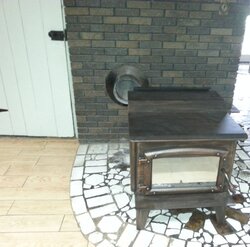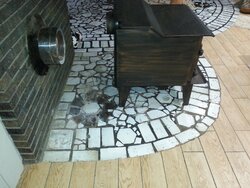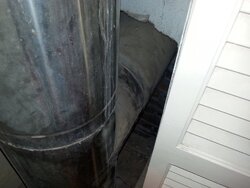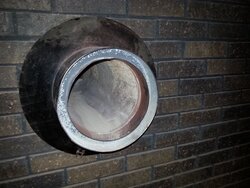Hello guys I really could use some help with making stove to chimney connection. I bought a new wood burning stove that has a 6" rear flue in the center of the stove. The old stove that I am replacing had the rear flue all the way to the left. This presents the first challenge, in order to keep the stove nice and centered I need to offset it from the wall.
The next problem is that the old stove had an 8" flue. I am not sure of the chimney height but I can tell you it runs from the basement up through the first floor through the attic and out the roof.
Here's where I am at a loss, the stove pipe is double wall stainless but I am not sure which brand or even how to tell which brand. I have read that certain double wall will not connect to other double wall. The configuration on the old stove ran back through the brick wall to a tee and the straight up. Ideally I would like to find a tee that connected to the 8" and came out to a 6 " but haven't seen one yet. This leads me to believe that I could use a 6" to 8" increaser at the tee to allow me to run 6" to the opening at the brick wall. I am not sure if a 6" to 8" double wall increaser is even produced.
I hope I haven't confused anyone with my questions but I really am at a loss.
The next problem is that the old stove had an 8" flue. I am not sure of the chimney height but I can tell you it runs from the basement up through the first floor through the attic and out the roof.
Here's where I am at a loss, the stove pipe is double wall stainless but I am not sure which brand or even how to tell which brand. I have read that certain double wall will not connect to other double wall. The configuration on the old stove ran back through the brick wall to a tee and the straight up. Ideally I would like to find a tee that connected to the 8" and came out to a 6 " but haven't seen one yet. This leads me to believe that I could use a 6" to 8" increaser at the tee to allow me to run 6" to the opening at the brick wall. I am not sure if a 6" to 8" double wall increaser is even produced.
I hope I haven't confused anyone with my questions but I really am at a loss.






